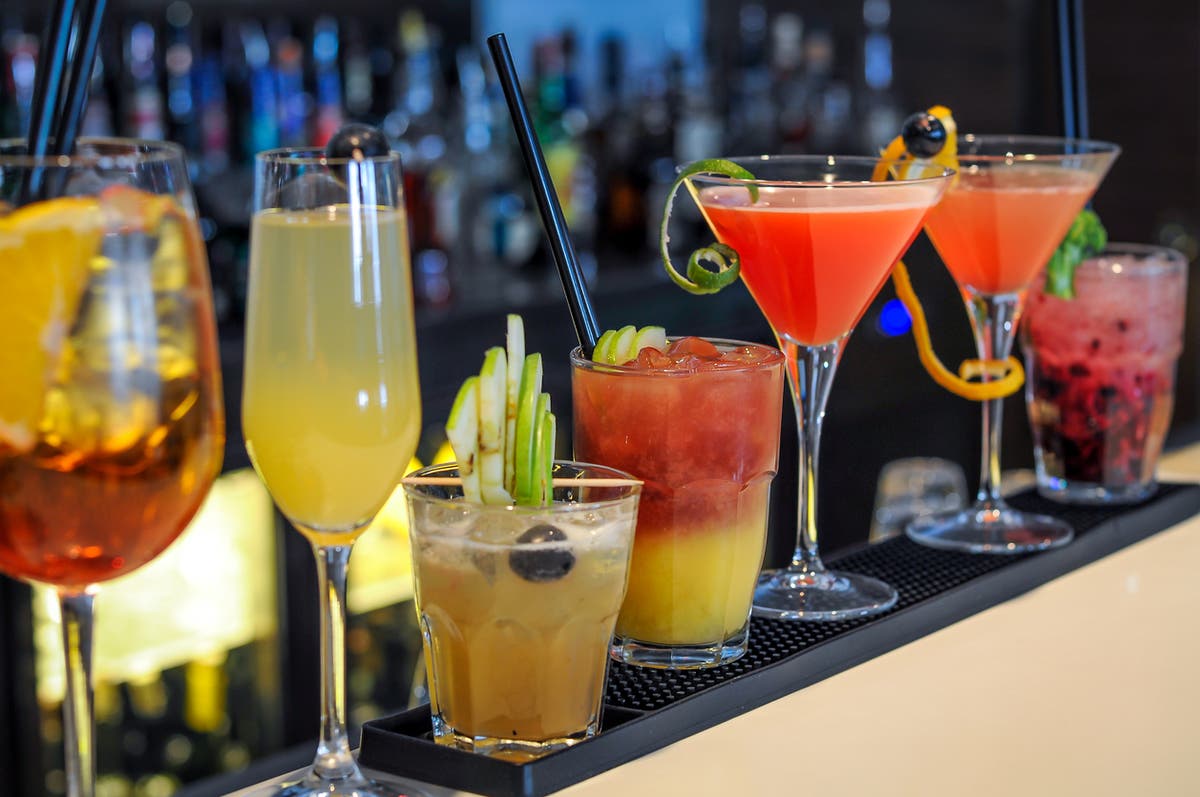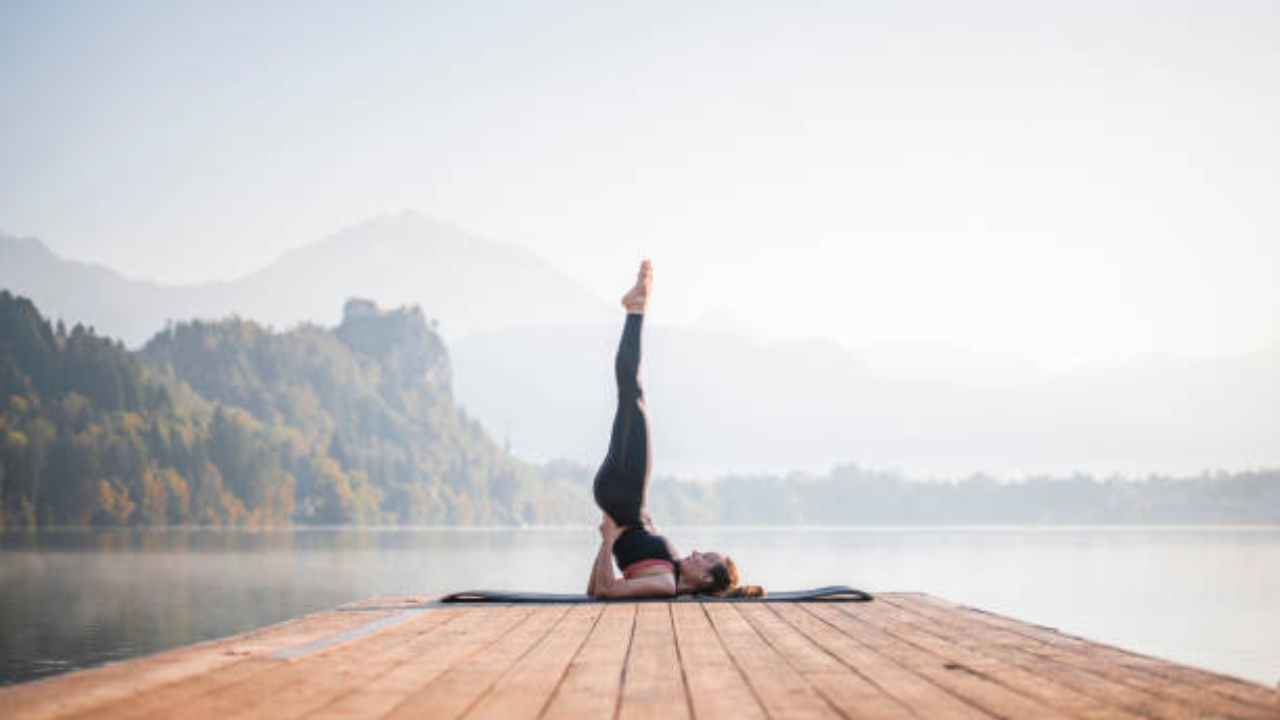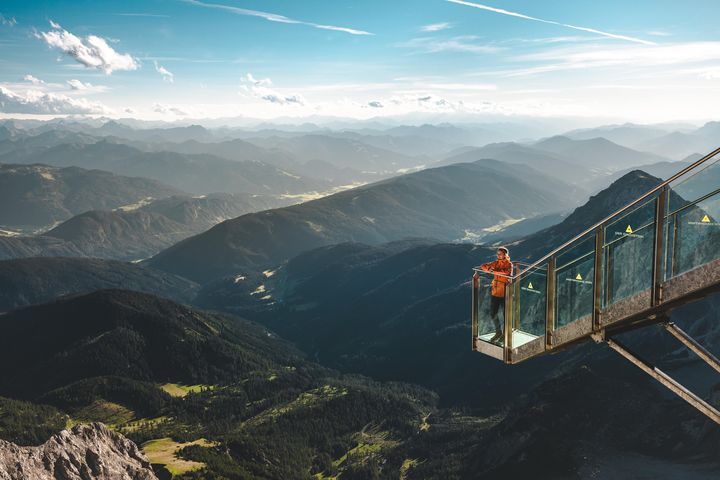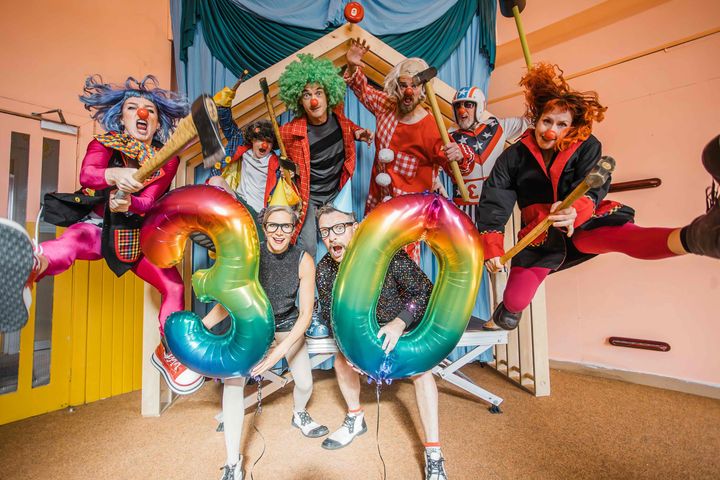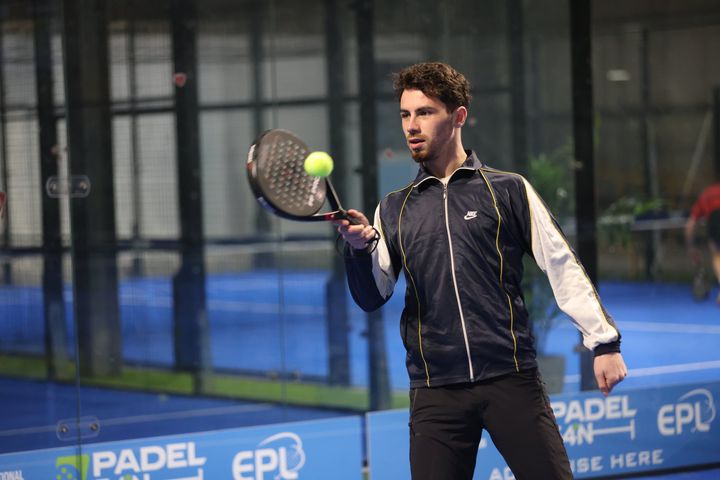
Touted as the world’s fastest growing sport, the game of padel originated in Latin America in niche circles before skyrocketing in popularity during the Covid pandemic. The home of Northern Ireland’s latest sporting phenomena is in Moira, called Padel 54. But what exactly is padel? “In a nutshell, it’s a hybrid between tennis and squash,” says Bradley Bate, owner and founder of Padel 54.
“It has the same scoring system as tennis but you’re surrounded, in a box. Each end of the court has a glass wall so that’s where the squash element comes in. “If ball bounces past you there’s still an opportunity to hit it off the glass, back to the other side.
The ball is in play a lot more than traditional tennis so you’re getting a lot more bang for your buck. It’s quite strategic, a bit like a chess match. “You can play singles but it’s more fun with four.
For people that may struggle to find more people to play with, that’s where the socials come in, so when we run them during the week it’s a good way to meet people.” Having played tennis before, and knowing all too well of its reputation, I walked into Padel 54 with expectations of regal sneers and snobbery at the new guy on the court — but this was far from the reality. Entering the facility, you’re greeted with a friendly smile from the reception desk and upbeat techno tunes echoing around the warehouse.
Still not entirely sure about what I was in for, I sheepishly made my way onto one of the royal blue courts to get a game in with Bradley. The caged court is small, around half the size of a tennis court, while the racket itself is akin to an enlarged ping pong paddle peppered with coin-sized holes. It’s very light and its honeycomb build allows for easy swings as we went back and forth with a ball.
“You don’t need as much power as the court is a lot smaller; a lot of the time you find that power goes against you.” Bradley explains. “You’ll find experienced padel players will let tennis players smash the ball because they’ll let it bounce off the glass and catch it on the rebound.
“Obviously, with tennis you’ve got a strung racket and there’s a lot more spring from the ball. With padel it’s an enclosed court with glass at the back, so when the ball comes off the glass it’s a totally different dynamic.” After getting into the swing of it, you quickly become aware of the backboard and try to play into it, adding another dimension to the game.
With little racket sports experience, I can attest that padel is an easy game to get on board with and I was able to get into a good few exchanges with Bradley before I inevitably sent the ball out of the cage. On the court I met David Williams (65), who represented Ireland this year in the over 55s division of the Padel World Championships. David played both tennis and squash before picking up a padel racket five years ago while on holiday in Alicante.
“In the early days you played tennis on the clay courts, but they weren’t playable in the winter time, so I played a lot of squash at club and province level,” he says. “I’ve played padel in Spain on holidays a few times, maybe once a year, but racket sports would be my background. When Padel 54 opened I was so enthusiastic and had to join.
“I can use my experience in both those sports. Padel is a lot more about controlling the ball and keeping it going rather than hitting it too hard — that’s where you make the mistakes. “There’s a lot of strategic thinking in terms of out-manoeuvring your opponents and changing your tactics to beat the opposition,” he continues.
“It’s the intensity of it; having played squash as well it’s sort of a hybrid between tennis and squash. Having played both sports, that intensity and that enclosed space is what I enjoy.” David offers his advice for newcomers and invited more people from his age group to get on board with the emerging sport.
“I’d like to see more padel players playing at my age level and I’d like to see other age group categories like tennis do. “Padel is a much easier game to start playing than the likes of tennis. For anybody starting out, go in with the view of having fun.
It’s very easy to start off — it’s a slightly softer ball and the rackets are slightly smaller. It’s a wee bit like beach tennis where you can bat the ball backwards and forwards. “I’m still learning, and when you play better players that keep beating you with the same shots it’s a very frustrating experience.
“You get a bug for it and you want to keep correcting your mistakes. That’s a major enjoyable thing about it, you want to keep improving.” After finishing our game, Bradley and I sat down to learn how Padel 54 came about.
He did business with a few Spanish colleagues who played the sport, and they decided to open up a club here after eyeing the sport’s increase in popularity. It’s now currently the largest padel facility on the island. “We are the first dedicated club in Northern Ireland and the biggest on the island of Ireland, but there are projects that are going to trump that soon because it is rapidly growing,” he says.
“There was a lot of scepticism from different sporting communities, particularly tennis. It was met with a lot of ‘that’s ridiculous, it’s just for people who can’t play tennis’ but we have found it’s OK to play both. “Managing expectations was quite difficult because people didn’t really know — padel was a completely new thing, so a lot of people had tennis in their heads.
“We invited lots of people down, including tennis clubs. We wanted to target the person that just wants to get away from the house and do some exercise.” Bradley says the aim for the club is to be a place where people can connect, emphasising that the game has built a strong social aspect around the world.
“The fundamental point of this whole concept is that it’s a social game and we want to be a social club. We have socials and different events during the week. “On Mondays we have a men’s night and on Friday we have mixed social for women and men, so it’s less pressure.
“I think it’s definitely the social aspect that attracts people. We have a great team of customer service and coaches that make people feel fantastic coming in. It is quite intimidating for a lot of people that want to come and try it.
“Predominantly it’s a very accommodating sport. For example, Harry, who I play with, is 18 but we also have David in our group who is 65 and we would mix and play matches. “I find padel is a bit of levelling field; a lot of players do come from tennis, I come from football myself so I don’t have a racket sports background, but I can hold my own and get around the court.
” Like football and other internationally played sports, different world regions have come to develop their own style of play on the padel court. As the sport is still fairly new in this part of the world, Bradley says the Irish style is “still being found.” “It’s very expressive; you will find your own style.
A lot of the Scandinavians are powerhouses but when you watch the Spanish and South Americans everything is fine and precise. There’s no wastage in output and everything is efficient. “The Irish do have national teams but they’re finding their way.
The Spanish have been playing so long and it’s ingrained their youth development.” The coaching roster for Padel 54 includes Spanish-born Javier Jimenez (22) who moved to Northern Ireland earlier this year. Javier first picked up the game at a young age in his hometown of Madrid where the game is now commonplace.
“I started playing when I was six or seven years old. At first it was just for fun and then I started loving the game,” Javier explains. “It’s very social and you don’t need to be at a very high level to play.
In the way you play, Argentinians can be high tempo while the Spanish play light handedly. About ten years ago there started to be lots of [padel] facilities in Spain, three or four clubs per area.” Meanwhile, back in Northern Ireland, the support for padel isn’t quite where Bradley would like it to be.
To tackle this, he’s eager to reach out to schools in the hope of seeing interest grow in the sport. “I think that’s one thing we are lacking here, youth development,” he says. “We’re currently in chats with lots of schools and what we want to do is offer our facility during the day.
We’re approaching a lot of schools and councils in the area for them to come down for free. “It’s only a matter of time before people will start taking note. There’s a lot of tennis clubs adopting the sport now.
This could help benefit a lot of sporting structures for schools.” For those potentially still on the fence about padel, Bradley offers it as more than just a sport but as a channel to meet new people and socialise. “I feel like people should come try it as there’s more of a social aspect to this game.
“When you play, the dopamine hit you get comes quite quickly and people get into it. It’s a completely mixed demographic and I think that’s the nice thing; it’s not just people in their early twenties. “I’ve played football at junior to higher level but I find there’s opportunity to meet more people with this.
“You’re never playing the same person and you’re always meeting new people. I find this potentially has the platform to penetrate a big network, especially with a lot of other clubs now popping up as well.” Although the game is still in its early days here, it’s easy to see why padel is referred to as the world’s fastest growing sport.
The small court, social focus and forgiving nature of play sets it up as a fun game for all ages, making for a more down to earth alternative to the sport of kings. For more information on Padel 54 see padel54.com.








